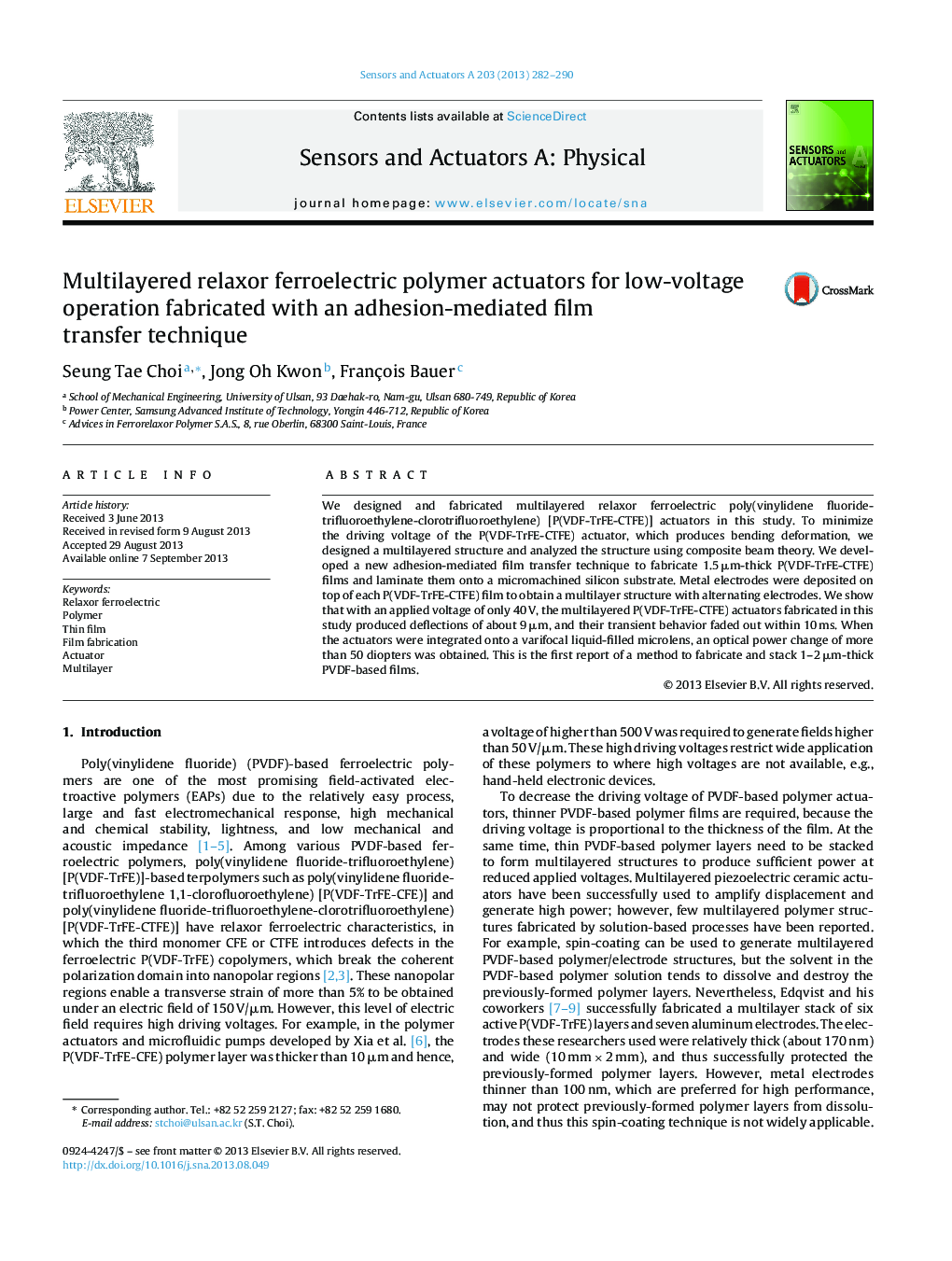| Article ID | Journal | Published Year | Pages | File Type |
|---|---|---|---|---|
| 737479 | Sensors and Actuators A: Physical | 2013 | 9 Pages |
•We design and analyze a multilayered polymer actuator using composite beam theory.•We develop a new adhesion-mediated film transfer technique.•We fabricate multilayered relaxor ferroelectric polymer actuators.•We measure the performance of the fabricated multilayered relaxor ferroelectric polymer actuators.
We designed and fabricated multilayered relaxor ferroelectric poly(vinylidene fluoride-trifluoroethylene-clorotrifluoroethylene) [P(VDF-TrFE-CTFE)] actuators in this study. To minimize the driving voltage of the P(VDF-TrFE-CTFE) actuator, which produces bending deformation, we designed a multilayered structure and analyzed the structure using composite beam theory. We developed a new adhesion-mediated film transfer technique to fabricate 1.5 μm-thick P(VDF-TrFE-CTFE) films and laminate them onto a micromachined silicon substrate. Metal electrodes were deposited on top of each P(VDF-TrFE-CTFE) film to obtain a multilayer structure with alternating electrodes. We show that with an applied voltage of only 40 V, the multilayered P(VDF-TrFE-CTFE) actuators fabricated in this study produced deflections of about 9 μm, and their transient behavior faded out within 10 ms. When the actuators were integrated onto a varifocal liquid-filled microlens, an optical power change of more than 50 diopters was obtained. This is the first report of a method to fabricate and stack 1–2 μm-thick PVDF-based films.
